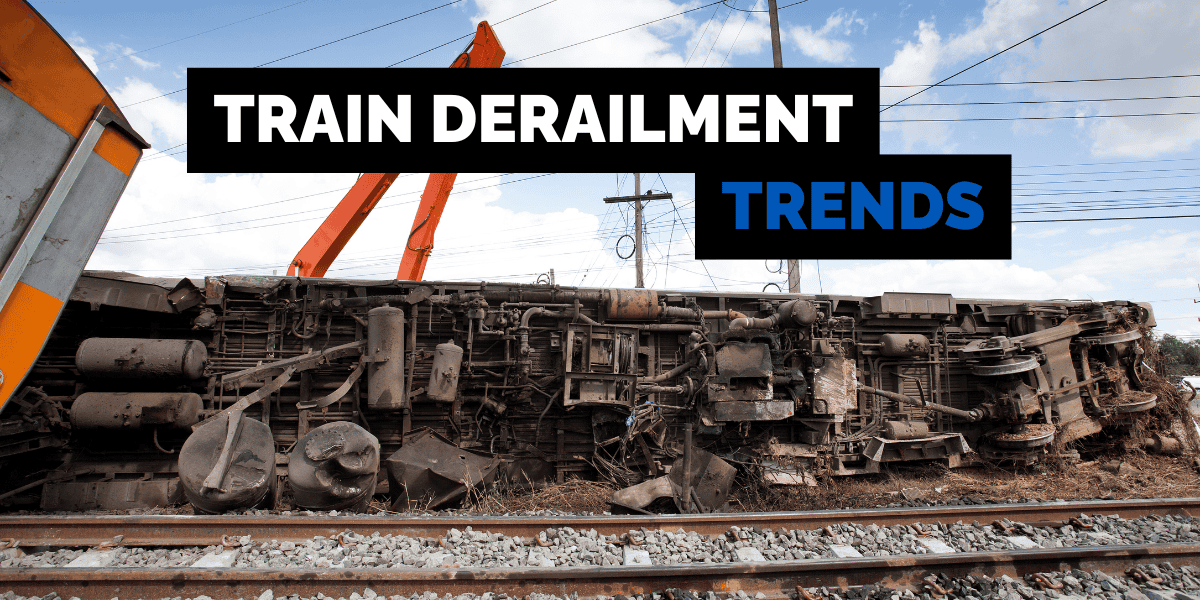
Train Derailments: Trends, Causes & Response Strategies
Train derailments remain a consistent risk across the U.S., disrupting freight, damaging infrastructure, and triggering costly cleanup efforts. While safety has improved, derailments still occur daily, often requiring fast, professional response. In this post, we explore key trends from the last decade and highlight why having a trusted recovery partner like West Side Salvage matters when seconds count.
Here is a summary of what we will cover:
- Train Derailment Fast Facts
- Train Derailment Trends Over the Years
- Top Causes of Train Derailments
- Impacts of Train Derailments
- Emergency Response Challenges
Fast Facts About Train Derailments in the US
Despite improvements in rail technology and safety standards, derailments remain a frequent and costly challenge, often requiring rapid, professional emergency response. Here’s what the data shows, and why it matters:
🚂 How Often Do Train Derailments Happen?
- ~1,240 derailments/year (2012–2022) → about 3 per day across the U.S.
- 1,259 derailments in 2022 → consistent with decade-long averages.
- 793 derailments in 2024 → on Class I freight railroads alone.
See more in our Trends of Train Derailments section.
🛤️ Where Do Train Derailments Occur?
- 74% in rail yards → lower speed, minor but frequent.
- 26% on mainline tracks → higher risk due to heavier cars, hazmat exposure, and costly cleanups.
See more in our Trends of Train Derailments section.
⚠️ How Dangerous Are Train Derailments?
- 6,600 hazmat cars derailed (2011–2021) → 348 released materials requiring cleanup.
- 5M+ gallons spilled → crude oil, ethanol, corrosives.
- 18,600+ people evacuated → mostly small towns and rural areas.
- $930M+ in damages → cleanup, liability, fines.
See more in our Impacts of Train Derailments section.
⏱️ Why Speed Matters in Derailment Response
In 2024 alone:
- 5 mainline derailments reported.
- 4 injuries & 6 hazmat releases.
- Rapid containment = lower costs, reduced risk, faster recovery.
See more in our Emergency Response Challenges section.
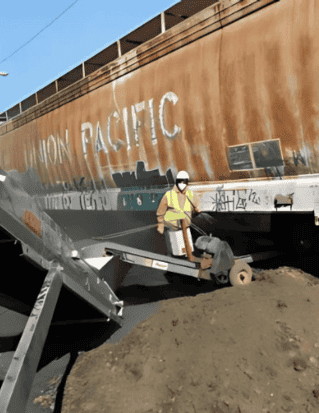
Need Fast, Professional Derailment Response?
While hazmat neutralization is handled by specialized teams, West Side Salvage is your trusted partner for derailment cleanup, salvage, transloading, and debris disposal.
Train Derailment Trends Over the Years
Train derailments may not always make headlines, but they happen more often than most people realize. Over the last decade, the data shows a steady rate of incidents and a consistent need for professional cleanup and salvage response.
Trends from 2012-2022
Trends (2012–2022): Train derailments average ~1,200 per year, with slight fluctuations but no major declines.
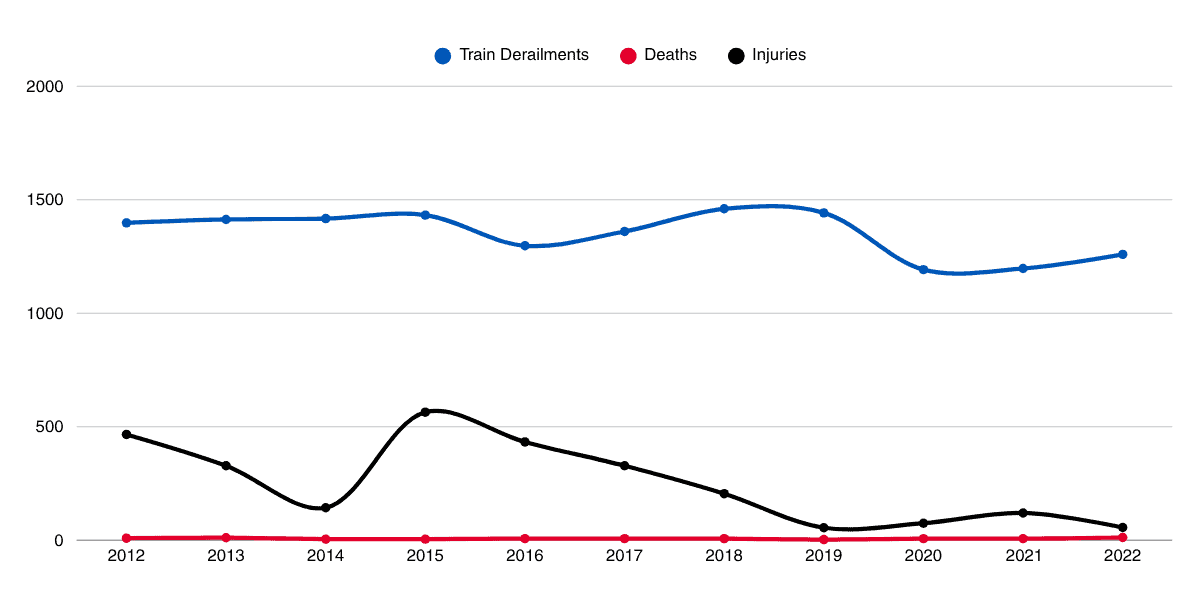
Trends by State (1975-2022)
Trends by State: Illinois and Texas lead the nation, together making up nearly 1/3 of derailments since 1975.
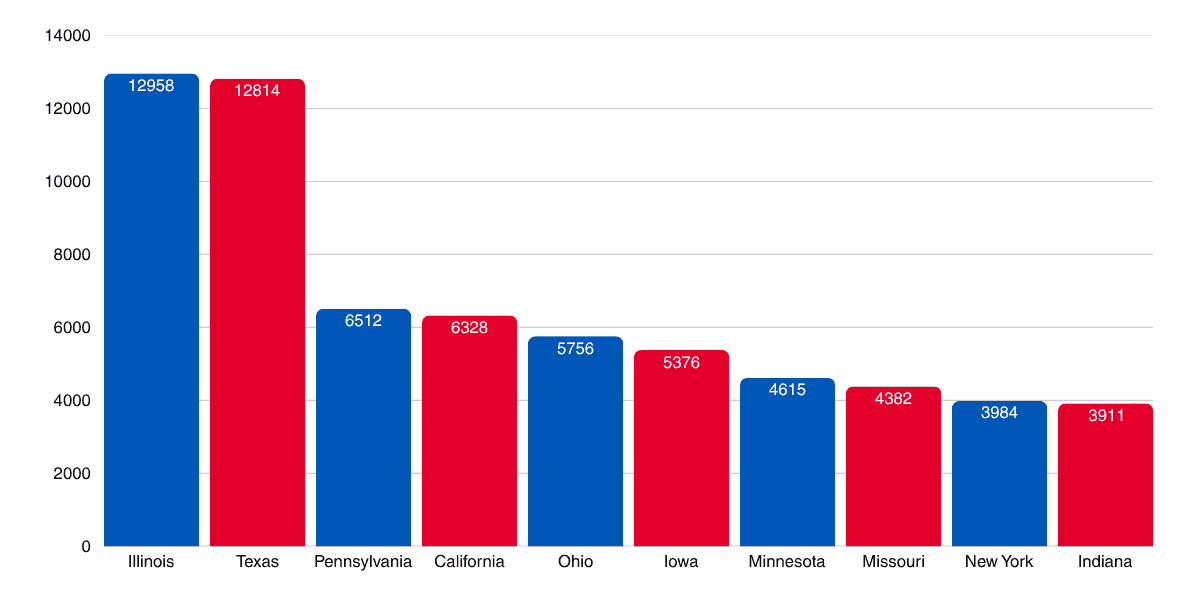
Class I Derailments: Yard vs. Mainline Incidents
Yard vs. Mainline: 74% of derailments occur in rail yards, while mainline incidents (26%) tend to be more severe.

Top Causes of Train Derailments in the US
While total derailment numbers have held steady, what’s causing these incidents reveals a deeper story, and highlights why derailment response teams need to be ready for a wide range of conditions.
- 🛤️ Track Defects (~36%) → the #1 cause of train derailments.
- ⚙️ Equipment Failures (~13%) → mechanical issues like axle, brake, or coupler failures.
- 👷 Human Error (~10%) → switching mistakes, miscommunication.
- 🌩️ Other Factors (remainder) → weather, signals, obstructions.
The External Stressors
Weather and infrastructure age are now bigger contributors to derailment risk than ever before:
- Extreme heat → warps steel tracks
- Flooding/washouts → undermine roadbeds
- Snow & ice → impact braking and switches
- Aging infrastructure → raises derailment risk
What This Means for Response
- Every derailment is different. From tipped grain cars to freight spills, no two recoveries are the same.
- Fast containment saves time & money. The quicker the response, the lower the costs and risks.
- Specialized crews make the difference. Experience + equipment = safer, faster recovery.
When derailments happen, rail operators turn to West Side Salvage for on-site cleanup, salvage, transloading, and debris disposal. Learn More
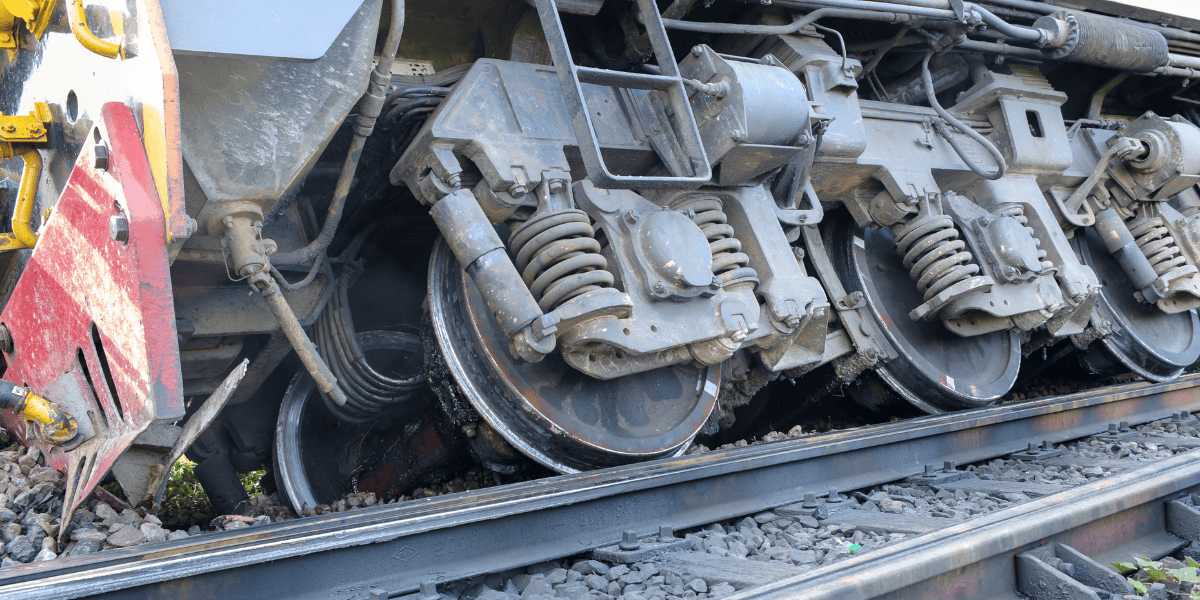
Economic, Environmental, and Safety Impacts of Train Derailments
Whether in a rural rail yard or on a major freight corridor, derailments have ripple effects that go far beyond the tracks. The consequences can be disruptive, dangerous, and expensive, especially when response is delayed.
18,600+
evacuations (2011–2021)
$930M+
in hazmat cleanup costs
5M+
gallons spilled
💰 Economic Impact
Train derailments cost the U.S. economy hundreds of millions annually through delays, product loss, and cleanup.
- Freight delays: Missed delivery windows, rerouting costs, and contractual penalties
- Product loss: Spilled or contaminated grain, ethanol, fuel, or consumer goods often become unsalvageable
- Railcar and locomotive damage: Repair or replacement can cost hundreds of thousands to millions
- Cleanup and disposal: The U.S. spent over $930 million on hazmat derailment cleanup between 2011 and 2021
- Site restoration: Railroads must often regrade soil, replace ballast, and restore drainage systems after a derailment
🌎 Community and Environmental Impact
Hazmat releases, evacuations, and agricultural damage can devastate small towns and rural areas.
- Evacuations & public safety risks: Over 18,600 people displaced during hazmat-related derailments (2011–2021)
- Agricultural land damage: Spilled grain or chemicals can impact soil, drainage, and crop production
- Waterway contamination: Especially in rural and flood-prone areas where runoff spreads quickly
- Blocked crossings: Delays emergency vehicles, commuter traffic, and local deliveries
🛠️ Infrastructure and Operational Disruption
Derailments ripple through the supply chain, stalling freight and clogging nearby lines for weeks.
- Track and bridge damage can take days or weeks to repair
- Rerouting rail traffic causes congestion on surrounding lines
- Transloading and salvage are often required to clear and recover usable cargo
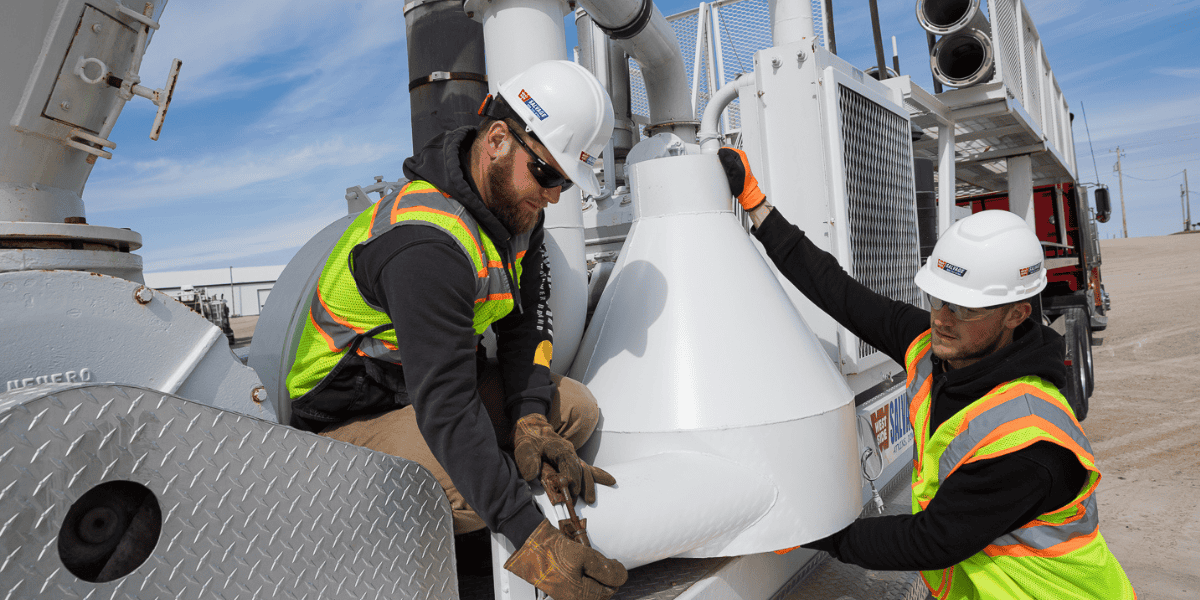
Emergency Response Challenges in Train Derailments
Train derailments don’t just require cleanup, they demand a fast, coordinated, and technically complex response. From the moment wheels leave the rail, a ticking clock begins for railroads, emergency crews, and contractors working to contain damage and restore operations.
⏱️ Time-Sensitive Conditions
Every hour of delay in a train derailment response compounds costs, risks, and public pressure.
- Blocked rail lines halt regional freight movement within minutes
- Hazardous material exposure increases with every hour of delay
- Spilled cargo and wreckage can damage farmland, roads, or water channels
- Media coverage and public pressure add urgency to restore normalcy quickly
🤝 Coordination is Critical
Multiple agencies and contractors must align quickly, or recovery slows dramatically. Derailment scenes often involve multiple parties:
- Railroad companies and private freight owners
- Local fire and EMS departments
- Hazmat teams (if needed)
- Environmental and transportation agencies
- Third-party salvage and recovery contractors
🛠️ On-Site Challenges
Crews face unstable wreckage, remote sites, and severe weather that demand specialized equipment and training. Responding crews like ours often face:
- Unstable wreckage → must be carefully lifted or cleared
- Remote locations → limited access for equipment
- Damaged terrain → muddy fields, washed-out roadbeds
- Severe weather → adds hazards and delays
These challenges require more than manpower — they demand the right heavy equipment, salvage expertise, and rapid mobilization. Learn More
Why Railroads Trust West Side Salvage for Train Derailments
- 🚛 Rapid Mobilization → crews and heavy equipment dispatched fast to minimize downtime.
- 🛡️ Safe Scene Control → secure derailment sites to protect workers and communities.
- ♻️ Efficient Recovery → transloading, debris removal, and salvage handled end-to-end.
- ⏱️ Reduced Risk & Downtime → proven methods that cut environmental and operational disruption.

Fast Response Makes All the Difference
Train derailments remain a serious risk — from lost cargo and blocked tracks to costly environmental damage. Even with safety advances, derailments still happen daily in the U.S. When they do, the difference between a minor disruption and a multimillion-dollar disaster comes down to one thing: how fast and effectively you respond.